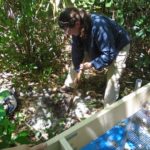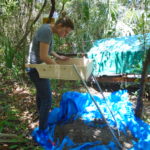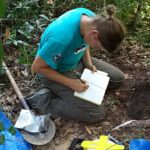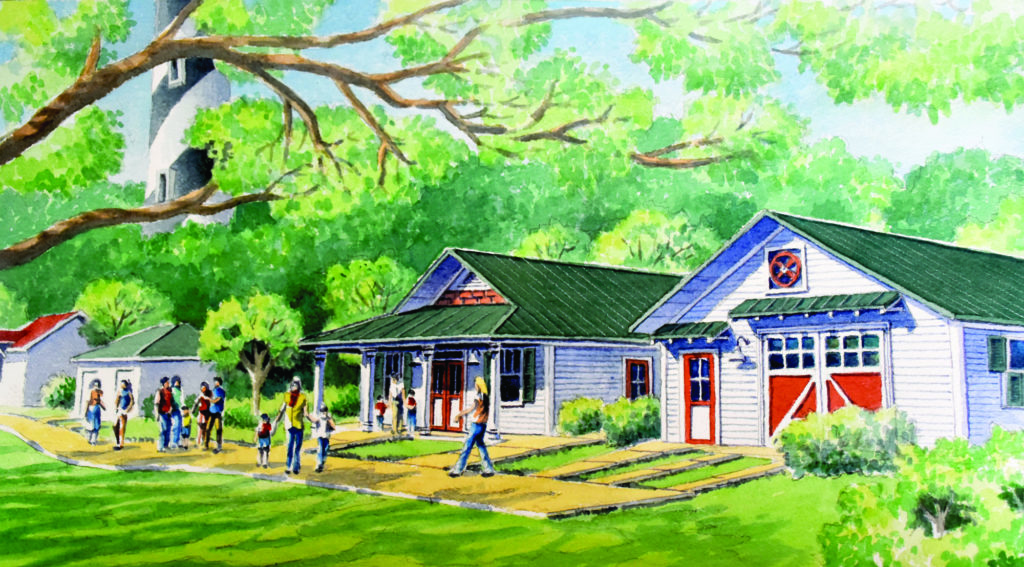 As many of you may know, some big changes are in the works for the St. Augustine Lighthouse & Maritime Museum in the coming months!
As many of you may know, some big changes are in the works for the St. Augustine Lighthouse & Maritime Museum in the coming months!
First and foremost, we are preparing to start construction on our new Maritime Archaeology and Education Center. As archaeologists, part of our role in the planning for the new buildings was to perform an archaeological survey of the area that was to be disturbed during the construction process. This type of survey, often referred to as Cultural Resource Management surveys, or CRM, are required by law before any sort of construction or similar project take place. This meant that Kira Sund, one of our regular volunteer archaeologists, and I traded our scuba gear and shipwreck sites for a bit of terrestrial archaeology here on the Lighthouse grounds. Read on to see Kira’s take on our Lighthouse archaeology experience!
Lighthouse Shovel Testing
By Kira Sund
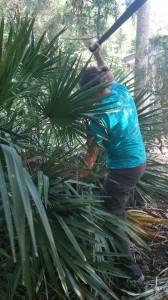
We may not have had ancient cursed tombs, but it certainly felt like cutting our way through the jungle at times!
When people visualize archaeology, they typically imagine lost ruins in the deep jungle or ancient cursed tombs. What they don’t usually picture are teams working next to roads or in construction sites digging small sample holes to survey the area. Yet this is one of the most common forms of archaeology; the shovel test, a method used to determine whether there is even archaeological material to be found, and what to do if any is found. It might not seem glamorous (it frequently isn’t), but without these tests many sites would not be found. This kind of testing is frequently performed before construction projects commence; seeing what might be there before it would be built over or demolished.
As the Lighthouse looks to expand with new archaeological and maintenance buildings, this same testing is required. The location of the proposed building was marked, and a pair of archaeologists worked a grid pattern to dig a series of twelve pits one meter (3.3 feet) deep each. Each shovel full is dumped into a screen so it can be sifted for artifacts. There is always a little thrill when something turns up in the screen, even when it is just a shard of glass bottle or a fragment of mortar; anything found might provide an insight into who or what was there before.
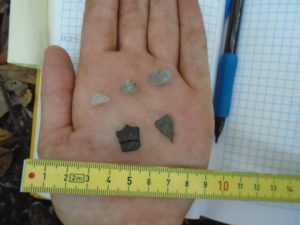
Most of the artifacts found during this survey looked like this – small fragments of modern material.
An example of this was a shard of glass from the base of a bottle; when examined, a seam was clearly visible across the bottom. This indicated the bottle was made using a two piece glass mold. This type of glass production was prominent during the early 19th century in the United States. There were pieces of slag in one of the pits, the left over product of smelting. The artifacts found were not frequent enough to suggest any significant archaeology buried nearby, instead there was just enough to get vague glimpses of what might have been there in the past.
In some of the test pits nothing is found, the only objects turning up in the screen are chunks of tree root. These are considered sterile test pits with little to remark upon. Notes are still taken on the soil color changes and at which depths the changes occur, but that is all.
In the end there was nothing of significance found in any of the tests, so no further excavation is needed in that area. The work can be difficult, but very worthwhile; you end the day knowing that important archaeological sites are less likely to be destroyed by construction and you feel a connection with what history you did find. Sometimes you don’t need an ancient tomb for an adventure.
Construction on the new Maritime Archaeology and Education Center is set to begin in the coming weeks. Check back soon to see the progress on the new building, and the other exciting changes coming to our site in the near future!


